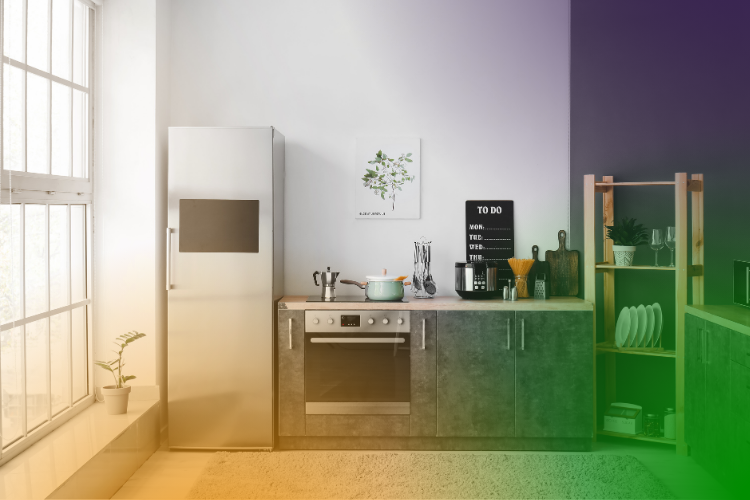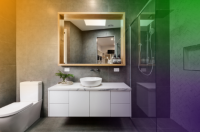Making the most of natural light when designing your home
Natural light is one of the most important elements to consider in interior design. Besides being great for our overall health and wellbeing, it is able to enhance a space by creating the illusion of larger rooms and a brighter atmosphere. We’re sharing some tips with you today that you can use to manipulate your interior design and get the most out of natural light in your home.
Consider window positioning
Take a step back and consider the practicality of your home in relation to using natural light. Which way does each of your windows face? Watch your windows throughout the day and notice how the light falls at certain times.
A south-facing window will give you the maximum light available during the winter months with nice, comfortable warmth in the summer. East or west-facing windows are excellent for welcoming bight daylight in the morning and evening, following the sunrise and sunset. North-facing windows are a happy medium since light tends to be evenly distributed. This means your room won’t get too hot. If you’re looking to buy or build a property your estate agent or builder can tell you which way your wall elevations face.
Once you know which way your windows face and how light is emitted into the room as the day goes on, you will know how to use natural light to the best of your ability.
Go open-plan
Open-plan designs are on-trend and very practical. In many Scandinavian houses and apartments, you can expect to find an open-plan layout, which means there a little to no dividing walls between certain rooms. This is a clever way to allow maximum light levels to brighten up what could have been only one room. You see this in countries far north of the equator because daylight in winter is shorter the closer a place is to the Arctic Circle. Therefore, light is precious and should be used to its fullest potential.
By enabling light to travel further distances, open-plan designs are also able to widen or lengthen a space and create the illusion of larger living areas, which is why you often see the lounge, kitchen and diner all in one room, with no walls to separate them, as this would stop light in its tracks and impact the overall brightness of each room.
Use a bright colour scheme
Daylight will reflect far better on lighter wall colours than it will on darker tones, so when you come to consider the colour palette of your room, make sure you also consider the amount of light that enters through the windows. You should also think about the size of your room. A smaller room with a dark wall colour is not going to look as bright and open as the same room in a lighter shade. Test some paints or wallpaper before re-decorating the whole room. Think about how the room would look with each colour and how light would bounce off of the walls. The lighter shades will be illuminated the most by natural light, meaning the room will look larger than it really is.
Adjust light levels with blinds
Don’t forget the amount of natural light flooding in through each window is not definitive. Be clever with your choice of window coverings so that you can adjust the light levels throughout the day. If you want certain parts of your room to be warmer or cooler at different times of day, invest in a set of blinds or window shutters. This way, you’ll be able to control the light so that you can either maximise the light coming in during the mid-morning or settle comfortably with the last crack of daylight peeking through during the evening…or vice versa! Being smart with window covers and making use of light curtains where possible gives you the opportunity to set the feel and tone of a room without having to use artificial lighting, which can often appear uncomfortable and too lucid. As an added bonus, by maximising natural light when you need it you can save on your electricity bill!
Reflect daylight using mirrors
A sneaky tip that interior designers always jump on when they need to enhance natural light in a room is to use mirrors. Incorporating reflective surfaces into a room creates an airy and luminescent aesthetic, as light bounces off the surface through the windows and spreads in the direction the mirror is facing. It’s an easy and quick fix if you feel your room is simply too dark. Be vigilant of where you place the mirror, as the heat and strength of sunlight shining in through the window can differ across climates and regional temperatures. While the risk is relatively low, be careful not to place your mirror directly in sunshine where it could reflect in the line of a flammable object.
If you found these tips useful, take some time to learn and understand how light travels through your home. When it comes to redecorating and interior design, light is your best friend. So make the most of it to give your rooms an airy, larger-than-life feel and, ultimately, a more positive atmosphere!




